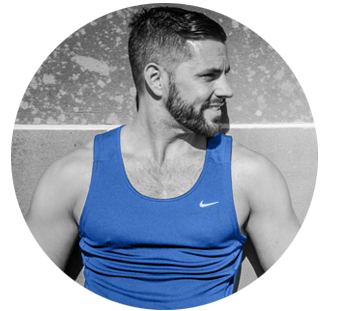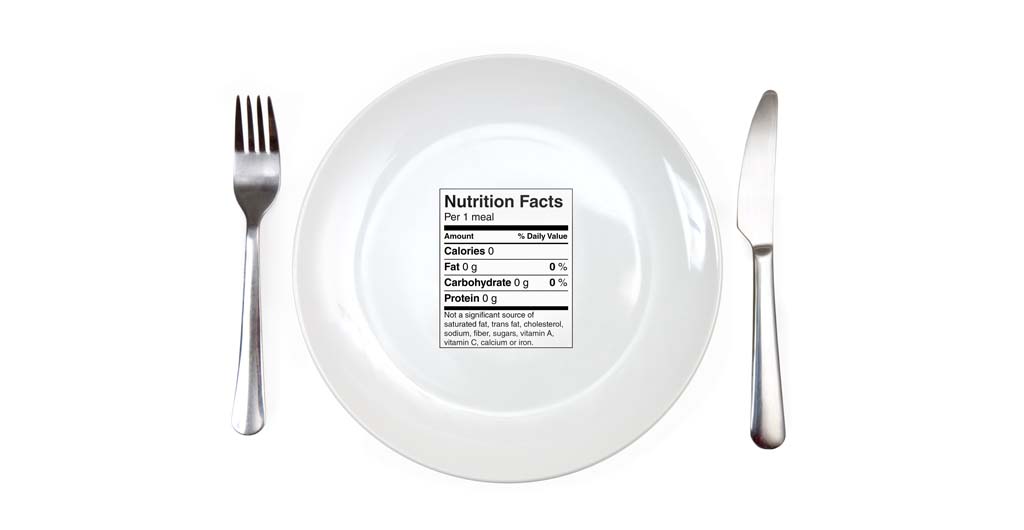Food, as I’m sure you know, contains energy and that energy is measured in calories. A calorie is a unit of heat and is the amount required to raise the temperature of one gram of water by one degree centigrade.
Calories are a bit of an old-fashioned unit of measure and many parts of the world, including Australia, use kilojoules instead – one calorie being equal to 4.2 kilojoules.
Different types of food contain different amounts of calories despite weighing the same…
- Protein contains four calories or 16.8 kilojoules per gram
- Carbohydrate contains four calories or 16.8 kilojoules per gram
- Fat contains nine calories or 37.8 kilojoules per gram
- Alcohol contains seven calories or 29.4 kilojoules per gram
Calories to lose weight
Body fat contains calories – around the same amount as dietary fat. It is estimated that to burn a single pound (or around 450 grams) of body fat, you need to create a caloric deficit of 3,500 calories/14,700 kilojoules so that means that, to lose a pound/450 grams, there needs to be a deficit of 500 calories/2,100 kilojoules per day. This deficit can come from exercise and/or physical activity or from diet but most experts agree its best when diet and exercise interventions are combined.
So, it might sound like simply cutting 500 calories/2,100 kilojoules from your daily food intake is all you need to do to lose weight BUT if you are still eating more food than you need, you won’t lose weight. Instead, you need to take 500 calories/2,100 kilojoules from the amount of calories you need to maintain your weight – called your basal metabolic rate or BMR for short.
To estimate your BMR either use an online energy expenditure calculator or break out your pencil and paper and do this equation.
BMR = (10 x weight in kg) + (6.25 x height in cm) – (5 x age in years) – 161
If that looks kind of tricky, here is an example so you can see how the calculation works for a woman who is 35, weighs 65 kilos and is 162.5 centimetres tall.
Do the calculations in the brackets first…
- 10 x 65 = 650
- 6.25 x 162.5 = 1015.625 (round to the nearest whole number so 1016)
- 5 x 35 = 175
Then finally, slot your bracketed calculations into the main calculation…
650 + 1016 – 175 = 1491 calories or 6262 kilojoules
Remember, this figure is your BMR (Basal Metabolic Rate) and represents the number of calories you need to eat to maintain your weight if you remain inactive the whole time. Imagine lying in bed for 24-hours and not doing anything more strenuous than reading a book or watching TV; the number of calories you’d need to ensure you neither lost or gained weight is your BMR. Of course, it’s highly unlikely that you actually do spend your day doing nothing so next we need to figure in how many calories you use during planned and unplanned physical activity.
How many calories you need depends on Harris-Benedict – or at least his formula! Again, you can use one of the online calculators if you prefer but this one is easy so you should be able to do it yourself.
To calculate your daily caloric needs, also known as your total daily energy expenditure or TDEE for short, multiply your BMR by the appropriate activity factor. Be honest though; just because you get to the end of the day feeling tired does not mean you have been physically active. Read the descriptions that go with each level of activity and pick the one that represents you the most accurately. Most people, unless they do a manual labour are going to be in the first or second category…

Harris Benedict activity multiplier
To determine your total daily energy needs, multiply your BMR by the appropriate activity factor, as follows:
- If you are sedentary (little or no exercise) : Energy-Calculation = BMR x 1.2
- If you are lightly active (light exercise/sports 1-3 days/week) : Energy-Calculation = BMR x 1.375
- If you are moderately active (moderate exercise/sports 3-5 days/week) : Energy-Calculation = BMR x 1.55
- If you are very active (hard exercise/sports 6-7 days a week) : Energy-Calculation = BMR x 1.725
- If you are extra active (very hard exercise/sports & physical job or 2x training) : Energy-Calculation = BMR x 1.9
So, using our previous example BMR of 1491 calories/6262 kilojoules and making the assumption that you are “lightly active” multiply that figure by 1.375 to give you 2050 calories/8610 kilojoules.
Once you know how much energy you need to maintain your current weight, simply take off 500 calories/2100 kilojoules to reveal how much food you need to eat to lose around a pound/0.45 kilos per week.
Eating for weight loss
Now you know how much you need to lose weight, it’s time to discuss how you can implement the necessary changes. There are several effective ways to reduce your energy intake – it’s all a matter of finding which one works for you.
- Reduce the size of eat of your meals to create the required energy deficit
- Eliminate snacks
- Cut down on fat
- Eliminate sugar
- Swap starchy carbs such as pasta, bread and rice for vegetables
- Swap high-energy drinks for water
Whichever way you choose to reduce your energy intake, do not try and lose weight too fast as doing so can trigger the starvation response – a set of circumstances triggered by eating too little food that actually promotes fat gain rather than fat loss. Half to one kilo per week is a safe and realistic weight loss target.
Calories to gain weight
Gaining weight or, more specifically building muscle, requires a calorie surplus of around 300 to 500 calories (1260 to 2100 kilojoules) ABOVE your total daily energy expenditure or TDEE. Simply calculate your BMR as before, use the activity multiplier to estimate your daily needs and then add between 300 to 500 calories per day to arrive at how much food you need to eat to build muscle. If you find that, after a few weeks of training hard and eating the right amount of food, you are still not gaining weight, increase your food intake by another 200 to 300 calories/840 to 2100 kilojoules. Beware of gaining too much weight too fast – it’s likely to be fat if you do.
Eating to gain weight
Knowing how much your need to eat is only half the battle – you actually need to do it to see any meaningful results from your training. Here are some easy ways to increase your food energy intake…
- Add an extra meal per day
- Eat larger snacks
- Have a protein shake 1-2 times per day
- Increase the size of your meals
- Eat a protein bar 1-2 times per day
- Drink milk with your meals (if you have no lactose issues)
Also remember, that any additional physical activity can cut into your energy surplus so be careful not to do too much additional physical activity outside of your training and if you do, eat more to ensure you maintain your energy surplus.
Calories to maintain weight
Of course, if you are a man or woman who is happy with their weight, you want to make sure you eat enough food to ensure you stay where you are and neither gain or lose weight. To achieve this, simply consume your BMR energy requirements, factor in your activity calculator and do not make any further changes. If you do more or less activity than you predicted, adjust your food intake as required. Keep an eye on your weight and look changes but don’t worry too much about occasional or daily fluctuations as this is likely to be water weight. Instead look for sustained changes over a week or so and then act accordingly.
Eating the right amount of calories is an important part of losing or gaining weight so you’ll need to track your food intake whichever one is your goal. Yes – weighing and measuring your food is a pain in the butt but it’s the only real way to ensure you are giving your body exactly what it needs. There are apps and websites that can help make the process much easier but whether you choose to go old school or high tech – if you want to get the best results for your dietary efforts, you need to track your calories.
is it possible we can add some simialr inforamtion to this articel simialr to this one here, as this one when doing my research gets massive seo traction on their site so it will be good to have some simialr info or keywords? https://www.12wbt.com/nutrition/how-many-calories
Hey Dinny – added some extra material.
Share this:
Click to share on Twitter (Opens in new window)
Click to share on Facebook (Opens in new window)
Click to share on Google+ (Opens in new window)

AUTHOR
Hi, my name is Dinny Morris. I’m a personal trainer and in sunny Sydney, Australia.
I work with men and women at all levels of their physical development, from overweight couch potatoes who want to get in shape, to professional athletes and natural bodybuilders who want to beef up strength and body mass.


Hi, my name is Dinny Morris. I’m a personal trainer and in sunny Sydney, Australia.
I work with men and women at all levels of their physical development, from overweight couch potatoes who want to get in shape, to professional athletes and natural bodybuilders who want to beef up strength and body mass.
